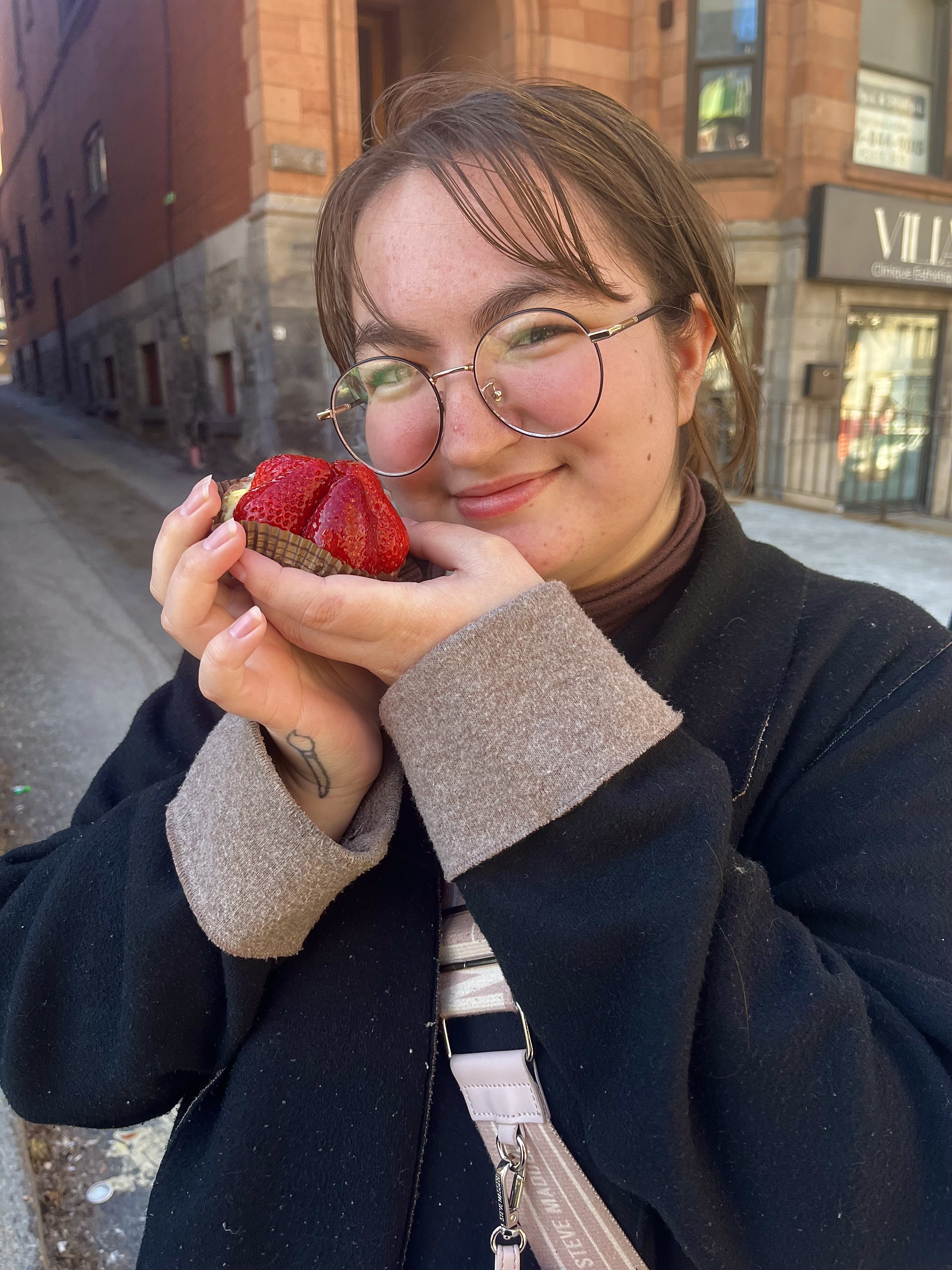Tashie Broadbent Harnesses the Power of Art to Heal
Northwestern Ontario community members made the decision to be part of Canada's journey to reconciliation by creating the stunning painting Maamawi, which now hangs in the Agora on the Thunder Bay campus.
"Maamawi refers to the action of coming together," says Tashie Broadbent, an Anishinaabekwe artist and Lakehead visual arts student who led this powerful community-based art project in September 2024.

Lakehead's Office of Indigenous Initiatives reached out to Tashie about leading this unique art project. "Maamawi was a community effort," Tashie says, "and the process of creating the piece was the main point. I'm very grateful that I got to be the carrier of the community's ideas."
Reconciliation has a strong personal resonance for Tashie.
"My father is a Sixties Scoop survivor who began searching for his mother as an adult," Tashie says. After finding her, Tashie's family moved from London, Ontario, to his home community of Manitou Rapids in northwestern Ontario where his mother was living. "This allowed me to absorb cultural influences, especially at powwows," Tashie says. It was in Manitou Rapids that she became familiar with the Woodland style of art that was used to create Maamawi.
"Woodland art employs bold lines, colours, and symbolism to illustrate Indigenous stories and teachings that I take inspiration from," Tashie explains. "There are times when Indigenous knowledge and perspectives should be at the forefront and, for this initiative, painting in the Woodland style made sense."
The Maamawi project was open to the general public, and more than 40 people took part in a brainstorming session to conceptualize the artwork and to talk about how they were fostering reconciliation. Along with community members, grade 7 and grade 8 students from Bishop EQ Jennings school, Lakehead University Indigenous Transition Year students, and Lakehead University Indigenous Learning students engaged in the artistic process.
"The imagery I chose to symbolize reconciliation—and to design the sketch that formed the basis of the painting—came from the participants' thoughts and intentions," Tashie says. "Many of the Indigenous participants said they were advancing reconciliation through practices like singing and dancing to keep their culture alive. Many of the settler participants said it was by educating themselves about the injustices faced by Indigenous Peoples in Canada and by acknowledging the damage this has caused. This is the significance of the turtle in the artwork—in the Anishinaabe Seven Grandfather teachings, the turtle is an embodiment of both the truth and the land. The jingle dress dancer that appears on the turtle is dancing to heal the land and its inhabitants."

Tashie has loved art since she was a child, but she only began thinking of it as a vocation after her parents began reconnecting with their culture. "My mom motivated me to pursue visual arts and she's given me little lessons over the years about my connection to art."
In the painting's upper left corner, a circle containing a drum represents the Indigenous community, which is joined by a line of connection to a circle in the bottom right corner containing a tree. "The tree represents the settler community and the learning and growth that's transforming it. The line of connection is wavy to signify the detours that reconciliation will take."
The actual painting process, guided by Tashie, happened in a second session. Afterward, Tashie worked nonstop to fix up the line work and the details in the circles and the turtle's shell, not finishing until the night before the artwork's unveiling. She was incredibly nervous about whether people would like it, but she arrived at the ceremony to find her family, friends, and professors there to support her. "It was so special to have people I look up to congratulating me," she says.
Tashie believes that projects like hers are important to reconciliation because "art is medicine and art can bridge cultures. Maamawi wouldn't have come together without people coming together."
Meet Tashie and get a behind-the-scenes look at the making of Maamawi.

